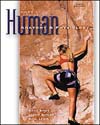This chapter presents the muscular system. In conjunction
with the skeletal system, the muscular system serves to move the body. The chapter
introduces the three types of muscle; the major events in contraction of skeletal,
smooth, and cardiac muscles; the energy supply to muscle fiber for contraction;
the occurrence of oxygen debt; and the process of muscle fatigue (objectives
1, 3, 4, and 10). The chapter describes the structure and function of a skeletal
muscle, distinguishes between a twitch and a sustained contraction, explains
how various kinds of muscle contraction produce body movements and maintain
posture, shows how the location and interaction of muscles produce body movements,
identifies the location and action of major skeletal muscles, and differentiates
the structure and function of a multiunit smooth muscle and a visceral smooth
muscle (objectives 2, 5-9, 11, and 12). The skeletal system can be thought of as the passive
partner in producing movement; the muscular system can be thought of as the
active partner. This chapter explains how muscles interact with bones to maintain
posture and produce movement. In addition, it tells the characteristics and
functions of skeletal, smooth, and cardiac muscles. This knowledge is a foundation
for the study of other organ systems, such as the digestive system, the respiratory
system, and the cardiovascular system. |



 2002 McGraw-Hill Higher Education
2002 McGraw-Hill Higher Education